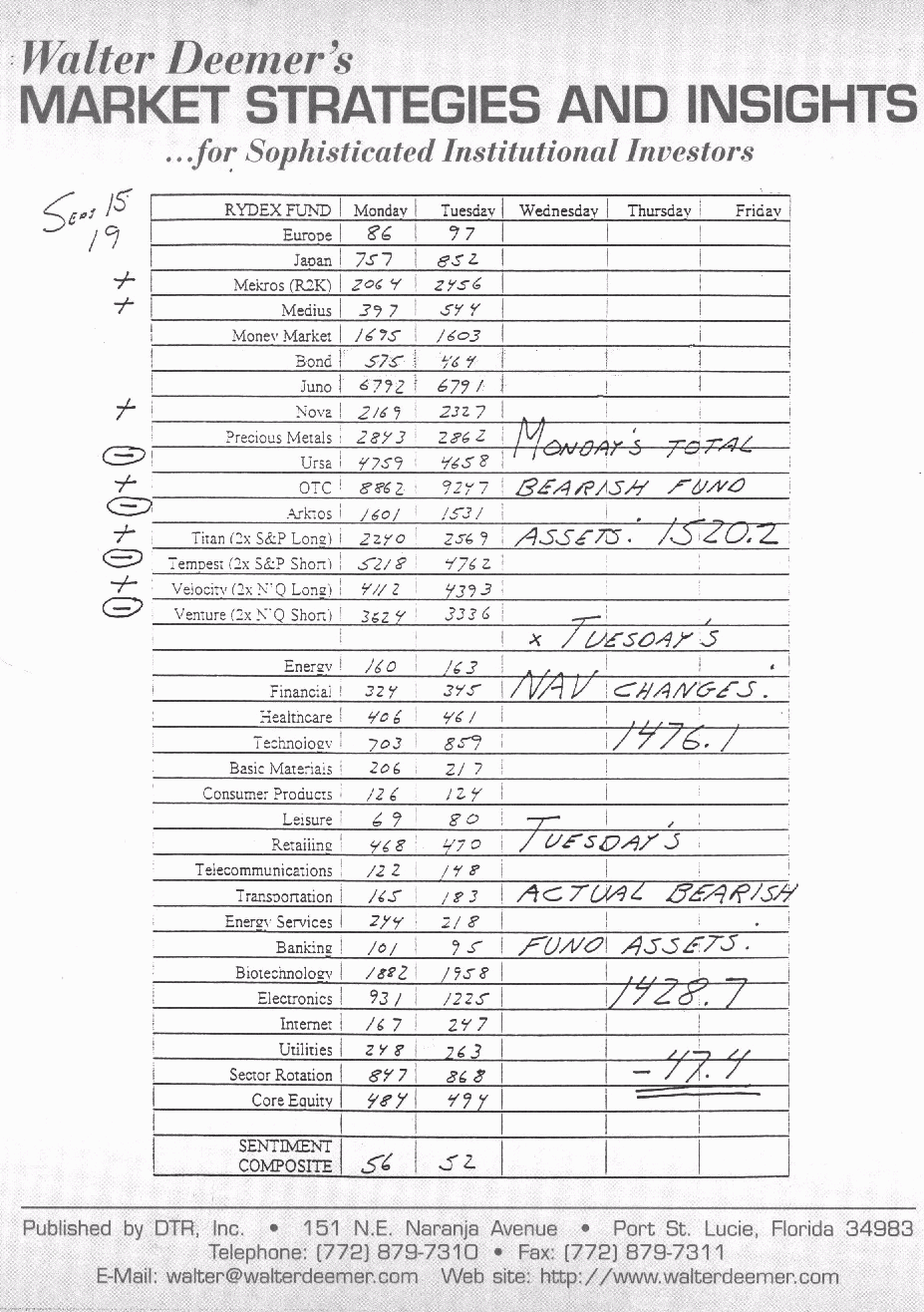

This is a copy of our Rydex worksheet from Wednesday, September 17. (You may want to download it and print it out to make it easier to follow this discussion.) The funds are listed in the order in which Rydex reports their assets every night, and the assets are listed in millions and tenths of millions of dollars. Europe, for example, had $9.7 million in assets on September 16th, Japan had $85.2 million, and so on. The one exception is the money market fund (the fifth one down), where assets are reported in millions of dollars; Money Market assets were thus $1603 million on this particular Tuesday.
We've identified Rydex's ten index funds in the left-hand margin: the six bullish index funds are marked with a "+" and the four bearish funds with a "(O)". We've found the inflows and outflows from the bearish funds to be the most helpful information of all, and this is how we calculate that number:
On Monday, the 15th, total bearish fund assets were $1520.2 million. The market went up that Tuesday, so the net asset values per share of the bearish funds went down. When we multiply Monday's assets by Tuesday's NAV changes, we get a new bearish fund asset total of $1476.1 million. But - the actual assets in the four bearish funds on Tuesday, as reported by Rydex, were only $1428.7 million. The shortfall -- $47.4 million - means that $47.4 million was taken out of Rydex's bearish funds that Tuesday.
A market rally can be greeted by players either selling short into it (which would mean an inflow into Rydex's bearish funds) or covering short positions (an outflow). In this case the Rydex players responded to the Monday rally with skepticism - by putting money into the bearish funds. And, since I am convinced that the Rydex players reflect hedge fund activity in general, this meant that hedge funds - the group that dominates market activity these days - shorted into Tuesday's strength. All other things being equal, this suggested that the rally was likely to continue over the short term (which, indeed, it did).
One day, of course, does not a trend make - but we have found that consistent shorting into strength (net inflows into the bearish funds) usually indicates that a very good short-term rally is underway. Further, the "very good short-term rally" tends to continue until at least some short-covering (reflected in a net outflow from Rydex's bearish funds) takes place. We have also noted that, in the past, it has sometimes taken as long as two weeks for a trend in the money flows in or out of the bearish funds to be reversed.
Even more importantly: if there have been a series of days with inflows or outflows from Rydex's bearish index funds, the subsequent price trend usually is not reversed until the total inflows or outflows have been largely offset. For example, if there have been net inflows of $500 million into the bearish funds over a ten-day period, which usually reflects shorting into a decline, the subsequent rally will usually keep going until $300-$400 million has come back out again.
We report these flows in our Daily Updates whenever they reflect something that is significant. Hopefully, this report will help you better understand how we get those numbers - and why we think they are worth following.
-- Walter Deemer